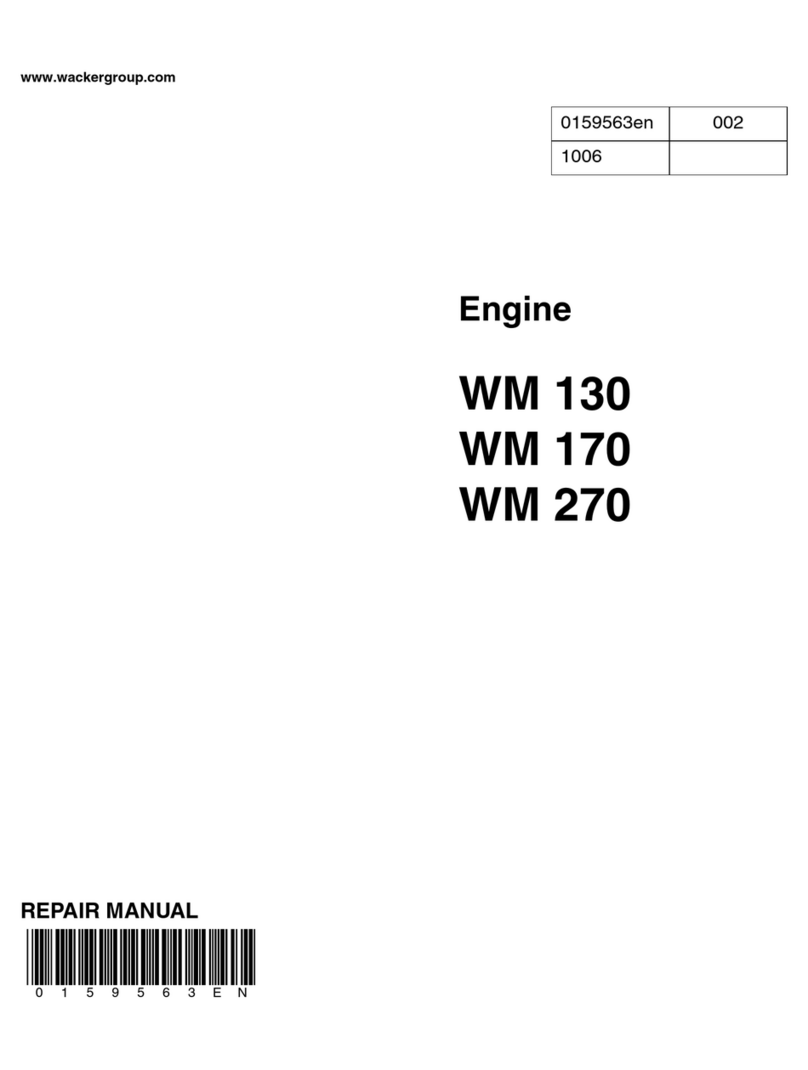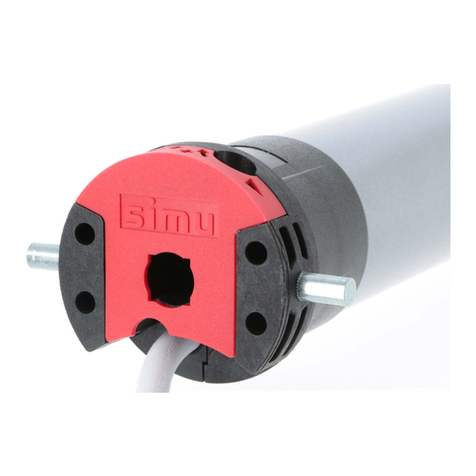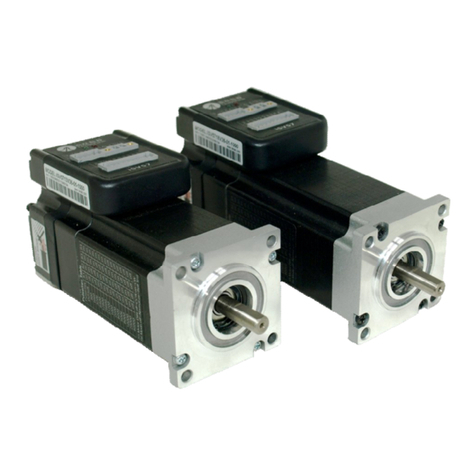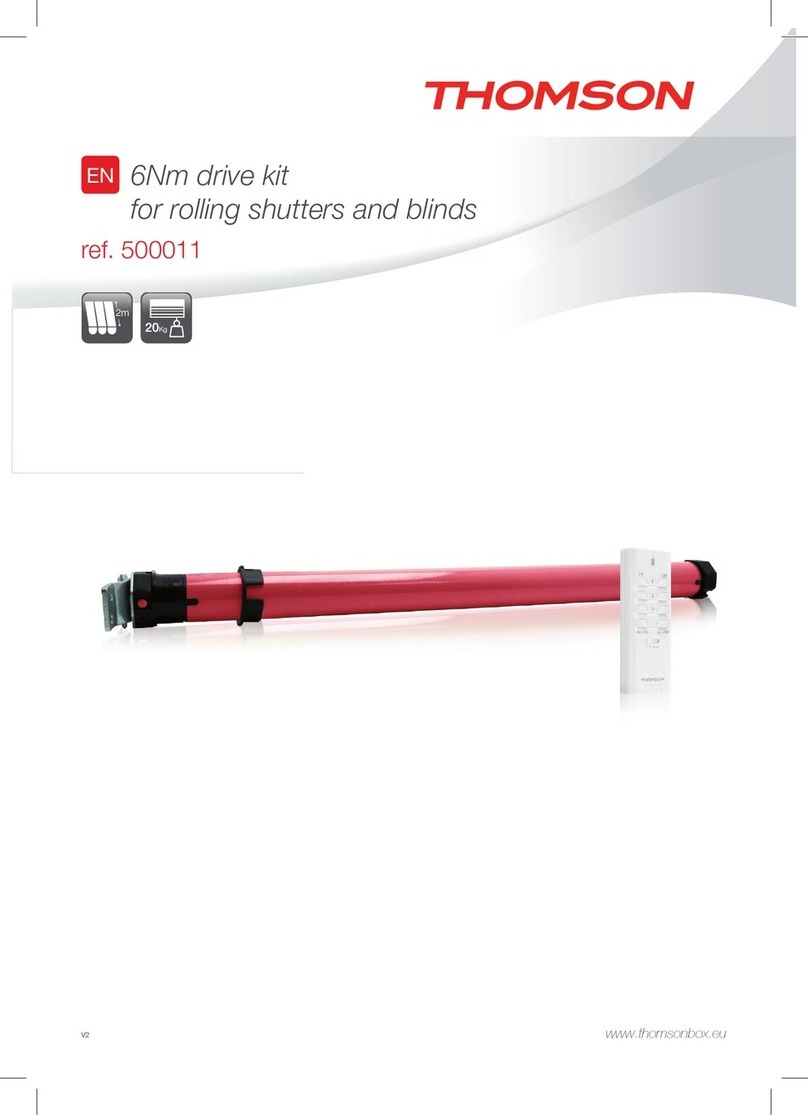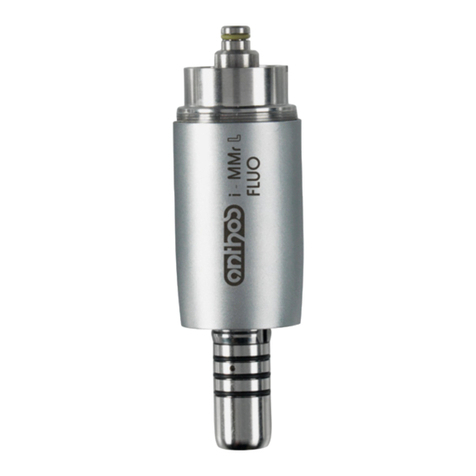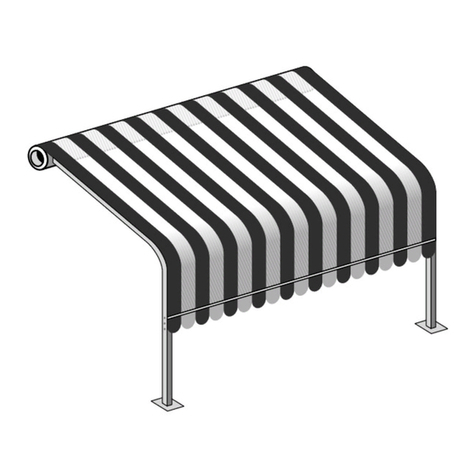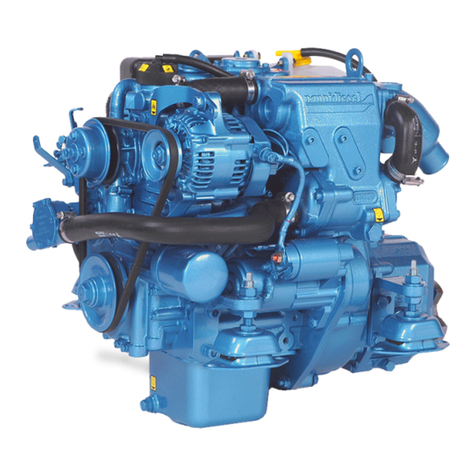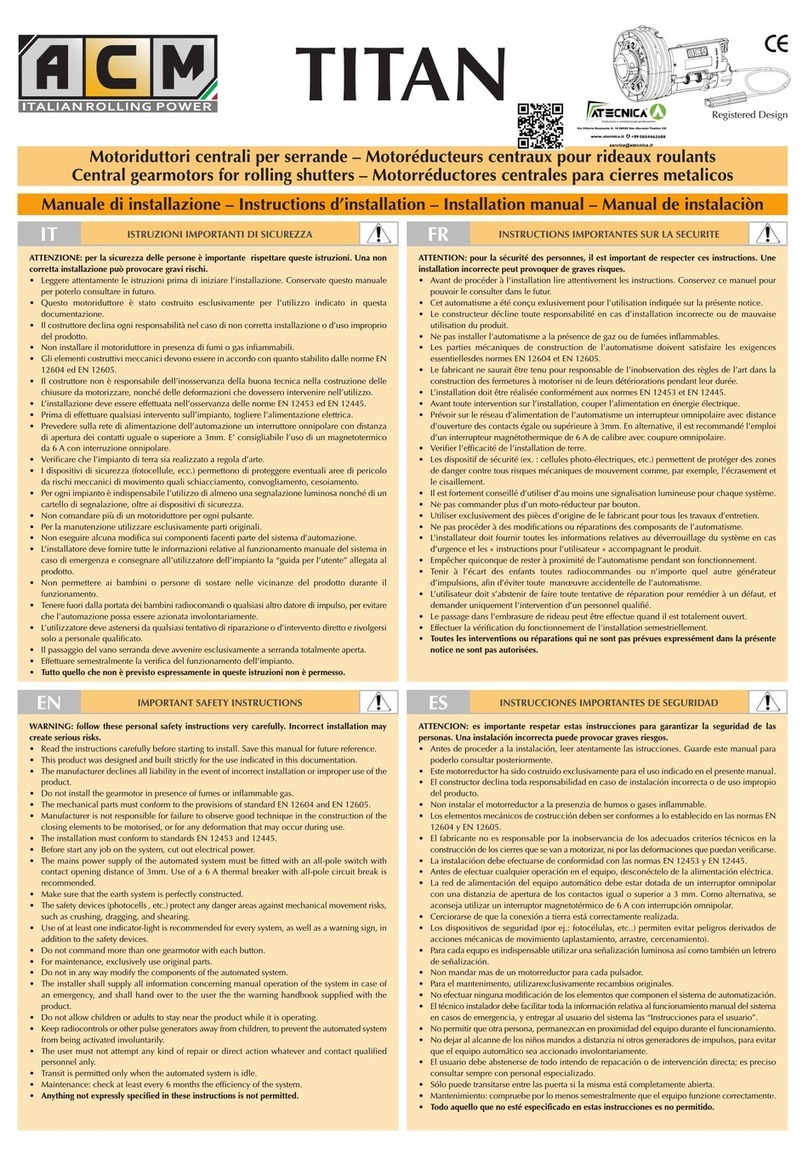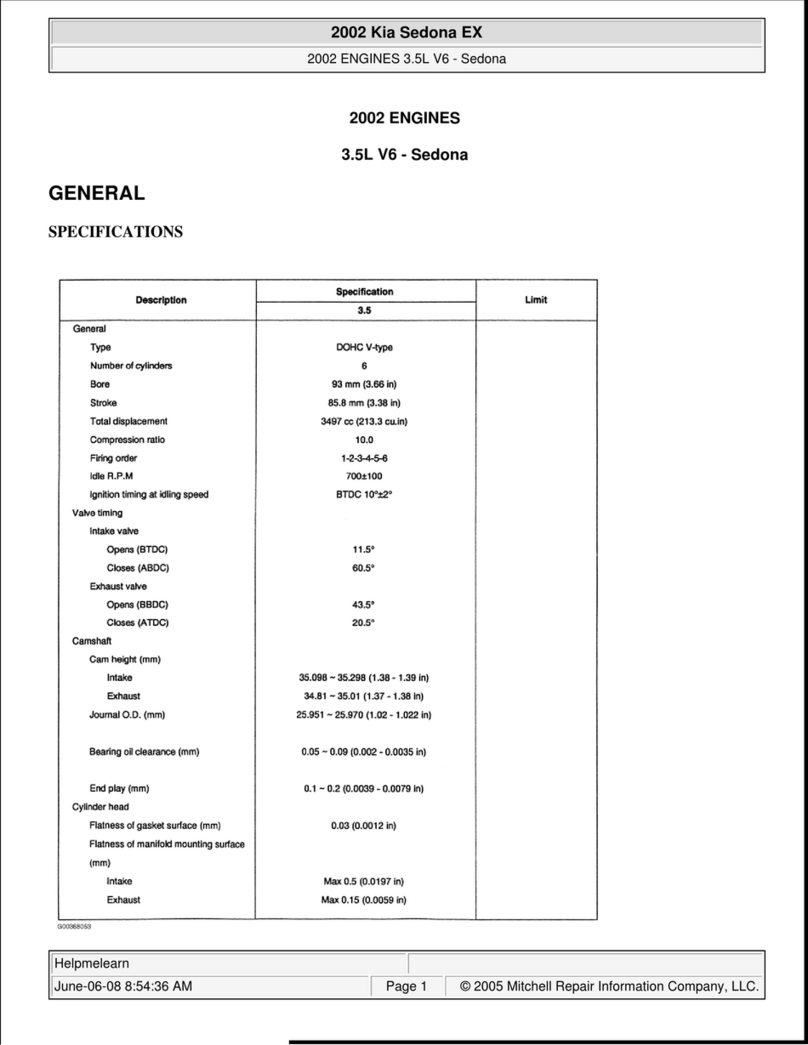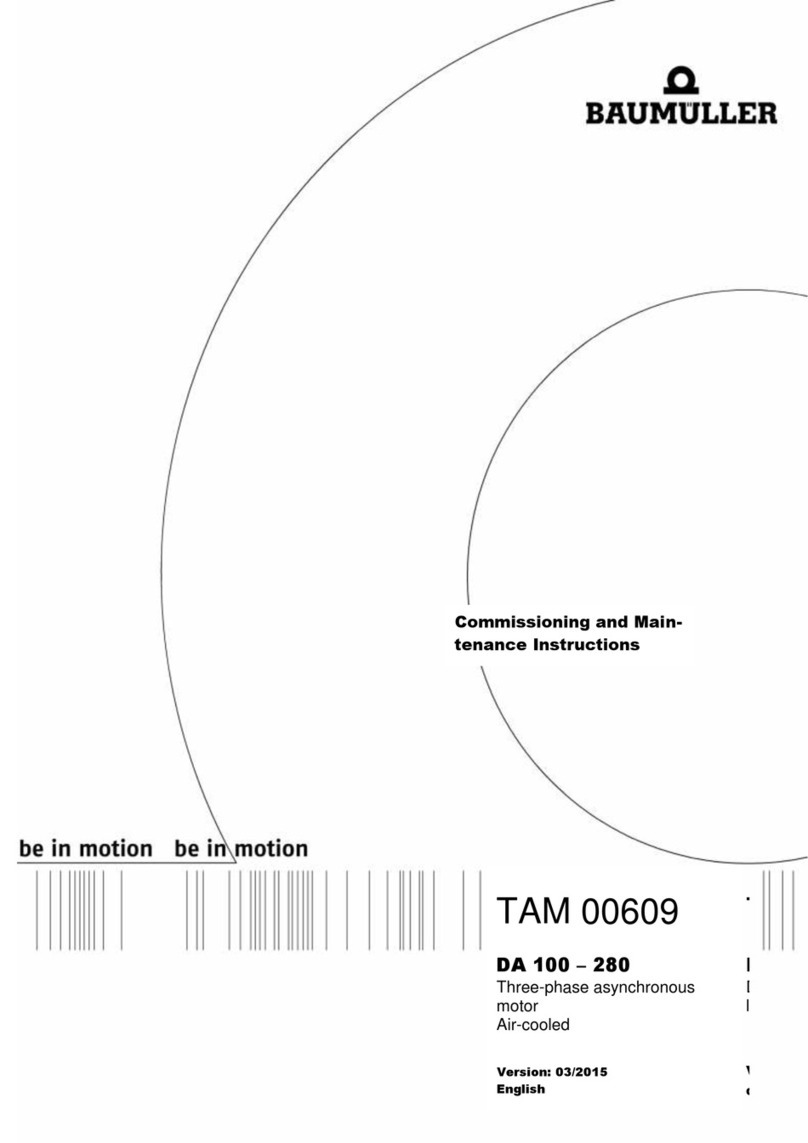Great Land DG1P61F User manual

1
ENGINES
OWNER'S
MANUAL
DG1P61F/65F
WARNING:
The engine exhaust from this product
contains chemicals to cause cancer, birth
defects or other reproductive harm.

2
CONTENTS
INTRODUCTION ...........................................................................................................3
SAFETY MESSAGES ................................................................................ ..................3
Damage Prevention Messages ..................................................................................3
Safety Information ......................................................................................................3
COMPONENT& CONTROL LOCATION .......................................................................4
BEFORE OPERATION CHECKS ..................................................................................4
OPERATION ..................................................................................................................4
Safe Operating Precautions .......................................................................................5
Starting The Engine.....................................................................................................5
Stopping The Engine...................................................................................................5
Specifications..............................................................................................................5
SERVICING YOUR ENGINE ...........................................................................................6
The Importance Of Maintenance .................................................. ..............................6
Maintenance Safety ...................................................................................................6
Safety Precautions......................................................................................................7
Maintenance Schedule............................................................................................... 7
Refueling.....................................................................................................................8
Fuel Recommendations..............................................................................................8
Engine Oil....................................................................................................................9
Air Cleaner.................................................................................................................11
Spark Plug .................................... ...........................................................................11
HELPFUL TIPS& SUGGESTIONS................................................................................13
Storing Your Engine................................................................................... ..............13
Adding A Gasoline Stabilizer To Extend Fuel Storage Life ......................................14
Draining The Fuel TankAnd Carburetor...................................................................14
Clean Fuel Strainer .................................................................................................15
Transporting ............................................................................................................16
TAKING CARE OF UNEXPECTED PROBLEMS...........................................................16
TECHNICAL& CONSUMER INFORMATION
TECHNICAL INFORMATION.........................................................................................17
Serial Number Location.............................................................................................17
High Altitude Operation ..........................................................................................17

3
2
INTRODUCTION
Thank you for purchasing our engine. We want to help you to get the best results from your new engine
and to operate it safely. This manual contains information on how to do that, please read it carefully
before operating the engine.
This manual should be considered a as permanent part of the engine and should remain with the engine
if resold.
Review the instructions provided with the equipment powered by this engine for any additional
information regarding engine startup, shutdown, operation, adjustments or any special maintenance
instructions.
SAFETY MESSAGES
Your safety and the safety of others is very important. We have provided important safety messages in
this manual and on the engine. Please read these messages carefully.
A safety message alerts you to potential hazards that could hurt you or others. Each safety message is
preceded by a safety alert symbol and one of three words, DANGER, WARNING, or CAUTION.
These signal words mean:
DANGER
You WILL be KILLED or SERIOUSLY HURT if you don't follow instructions.
WARNING
You CAN be KILLED or SERIOUSLY HURT if you don't follow instructions.
CAUTION
You CAN be HURT if you don't follow instructions.
Each message tells you what the hazard is, what can happen, and what you can do to avoid or reduce
injury.
SAFETY INFORMATION
Understand the operation of all controls and learn how to stop the engine quickly in case of emergency.
Make sure the operator receives adequate instruction before operating the equipment. Your engine's
exhaust contains poisonous carbon monoxide. Do not run the engine without adequate ventilation, and
never run the engine indoors.
The engine and exhaust become very hot during operation. Keep the engine at least 3 feet (1 meter)
away from buildings and other equipment during operation. Keep flammable materials away, and do not
place anything on the engine while it is running.

4
COMPONENT & CONTROL LOCATION
1.Starter grip
2.Fuel cap
3.Air filter
4.Carburetor
5.Spark plug
6.Muffler
7.Oil filler cap/dipstick
8.Fuel tank
9.Add pump
BEFORE OPERATION CHECKS
For your safety, and to maximize the service life of your equipment, it is very important to take a few
moments before operating check the engine condition. Be sure to take care of any problem you find, or
have your servicing dealer to correct it before you operate the engine.
WARNING
Improper maintenance to this engine, or failure to correct a problem before operation,
can cause a malfunction in which you can be seriously hurt or killed. Always perform a
pre-operation inspection before each operation, and correct any problem.
Always check the following items before you start the engine:
1.Fuel level (see page 8)..
2.Oil level (see page 9).
3.Air cleaner (see page 11).
4.General inspection : Check for fluid leaks and loose or damaged parts
5.Check the equipment powered by this engine
Review the instructions provided with the equipment powered by this engine for any precautions and
procedures that should be followed before engine startup.
OPERATION
SAFE OPERATING PRECAUTIONS
Before operating the engine for the first time, please review the
SAFETY INFORMATION section on page 3 and the BEFORE OPERATION CHECKS above.
WARNING
Carbon monoxide gas is toxic. Breathing it can cause unconsciousness and even kill you.
Avoid any areas or actions that expose you to carbon monoxide.

5
Review the instructions provided with the equipment powered by this engine for any safety precautions
that should be observed with engine startup, shutdown, or operation.
STARTING THE ENGINE
A1. FOR STARTING A COLD ENGINE:
When the temperature is below 10 degrees, Please press rubber cap for 2 or 3 times, as shown below.
Move the throttle control to the choke position. Close safety brake control handle (on the equipment),
Grasp rope handle and pull slowly until resistance is felt then pull cord rapidly to overcome compression
prevent kickback and start engine.
B1. FLYWHEEL BRAKE MODELS :
Move the starter control handle (located on equipment) to release the flywheel brake.
A2. FOR RESTARTING AWARM ENGINE:
Do not use the choke when the engine is warm. Move the throttle control slightly past
“THROTTLE ”position.
B2. FLYWHEEL BRAKE MODELS :
Continue to hold the starter control handle (located on equipment). The engine will stop if you
release the starter control handle.
WARNING
press rubber cap Up to 3 times.
The engine will stop if you release the starter control handle.
Do not allow the starter grip to snap back against the engine.
Return it gently to prevent damage to the starter.
STOPPING THE ENGINE
Flywheel brake models: Release the starter control handle (located on equipment) to stop the engine.
Specifications
Type
DG1P61F
DG1P65F
Dry weight(kg)
12.0
12.0
Engine type
4-stroke, overhead valve, single cylinder
Displacement [Bore x Stroke]
123cc 61x42mm
139cc 65x42mm
Max. torque
6.5N.m at 3000min-1
7.0N.m at 3000min-1
Brake cable
Commentaire [A1]: DELETE
Commentaire [q2]: DELETE
Commentaire [A3]: DELETE
Commentaire [A4]: CHANGE
TO ”Do not use the Add pump
when the engine is warm. “
Commentaire [A5]: Add

6
7
Cooling system
Forced air
Lubrication systems
Forced splash
Ignition system
C.D.I
PTO shaft rotation
Counterclockwise
Tune up Specifications
SERVICING YOUR ENGINE
THE IMPORTANCE OF MAINTENANCE
Good maintenance is essential for safe, economical and trouble-free operation. It will also help reduce
pollution.
WARNING
Improper maintenance, or failure to correct a problem before operation, can cause a
malfunction in which you can be seriously hurt or killed.
Always follow the inspection and maintenance recommendations and schedules in this
owner's manual.
To help you properly care for your engine, the following pages include a maintenance
schedule, routine inspection procedures, and simple maintenance procedures using
basic hand tools. Other service tasks that are more difficult, or require special tools, are
best handled by professionals and are normally performed by our technician or other
qualified mechanics.
The maintenance schedule applies to normal operating conditions.
If you operate your engine under severe conditions, such as sustained high-load or
high-temperature operation, or use in unusual wet or dusty conditions, consult your servicing
dealer for recommendations applicable to your individual needs and use.
MAINTENANCE SAFETY
Some of the most important safety precautions follow. However, we cannot warn you of every
conceivable hazard that can arise in performing maintenance. Only you can decide whether or
not you should perform a given task.
WARNING
Failure to properly follow the maintenance instructions and precautions can cause you
to be seriously hurt or killed. Always follow the procedures and precautions in this
owner's manual.
ITEM
SPECIFICATION
MAINTENANCE
Spark plug gap
0.6-0.7 mm
Refer to page 12.
Valve clearance (cold)
IN:0.06+0.02mm
EX:0.08+0.02mm
See your authorized
dealer
Other specifications
No other adjustments needed

7
SAFETY PRECAUTIONS
Make sure the engine is off before you begin any maintenance or repairs. This will eliminate
several potential hazards:
-Carbon monoxide poisoning from engine exhaust.
Be sure there is adequate ventilation whenever you operate the engine.
-Burns from hot parts.
Let the engine and exhaust system cool before touching.
-Injury from moving parts.
Do not run the engine unless instructed to do so.
Read the instructions before you begin, and make sure you have the tools and skills required.
To reduce the possibility of fire or explosion, be careful when Working around gasoline. use only a
nonflammable solvent, not gasoline, to clean parts. Keep cigarettes, sparks and flames away from all fuel
related parts.
Remember that an authorized servicing dealer of our company knows your engine best and is fully
equipped to maintain and repair it.
To ensure the best quality and reliability, use only our new genuine parts or their equivalents for repair and
Replacement.
MAINTENANCE SCHEDULE
REGULAR SERVICE
PERIOD(4)
Before
Each
Use
First Month
or 5Hrs
Every 3
Months
or 25Hrs
Every
6Month
or 50Hrs
Every
Year or
100 Hrs
Every
Two
Years or
250 Hrs
Page
ITEM perform at every
indicated month or
operating hour in trial.
Which ever come sfirs t.
Engine oil
Check
9
Replace
(2)
10
Air cleaner
Check
11
Clean
(1)
Replace
Spark plug
Check-adjust
12
Replace
Flywheel
Brake pad
Check
12
Spark
arrester
Clean
12
Fuel tank
and filter
Clean
(3)
Shop manual
Fuel tube
Check
Every 2 years (Replace if necessary) (3)
Shop manual
Valve
clearance
Check-adjust
(3)
Shop manual
Combustion
Chamber
Clean
After every 200 hours (3)

8
(1)Service more frequently when used in dusty areas.
(2)Change engine oil every 25 hours when used under heavy load or in high ambient temperatures.
(3)These items should be serviced by an authorized servicing dealer of our company, unless you have
the proper tools and are mechanically proficient. Refer to the Honda shop manual for service procedures.
REFUELING
Use unleaded gasoline with a pump octane rating of 93 or higher. This engine is certified to operate on
unleaded gasoline. Unleaded gasoline produces fewer engine and spark plug deposits and extends
exhaust system life.
WARNING
Gasoline is highly flammable and explosive, and you can be burned or seriously
injured when refueling.
.Stop engine and keep heat, sparks, and flame away.
.Refuel only outdoors.
.Wipe up spills immediately.
Fuel can damage paint and some types of plastic. Be careful not to spill fuel when
filling your fuel tank. Damage caused by spilled fuel is not covered under the Warranty.
Never use stale or contaminated gasoline or oil/gasoline mixture.
Avoid getting dirt or water in the fuel tank.
Adding Fuel
1.Remove the fuel tank cap.
2.Add fuel to the bottom of the fuel level limit in the neck of the fuel tank.
Do not overfill. Wipe up spilled fuel before starting the engine.
Fuel tank capacity: 1.5l
FUEL CAP

9
10
ENGINE OIL
Recommended Oil
Use 4-stroke motor oil that meets or exceeds the requirements for API service classification SH, SJ, or
equivalent. Always check theAPI service label on the oil container to be sure it includes the letters SH,SJ,
or equivalent.
SAE 15W-40 is recommended for general use. Other viscosities shown in the chart may
be used when the average temperature in your area is within the indicated range.
Oil Level Check
1.Check the oil with the engine stopped and level.
Max:upper limit
Min: lower limit
2.Remove the oil filler cap/dipstick and wipe it clean.
3.Insert the oil filler cap/dipstick into the oil filler neck as shown, but do not screw it in,
then remove it to check the oil level.
4.If the oil level is near or below the lower limit mark on the dipstick, remove the oil filler
cap/dipstick, and fill with the recommended oil to the upper limit mark (bottom edge
of .the oil fill hole). Do not overfill.
5.Reinstall the oil filler cap/dipstick.

10
This engine is delivered without oil, be sure to put oil in the engine before starting.
Use a clean, detergent and high quality oil SAE 15W-40 and API. SG, SH, SJ
classification.
Oil Change
Drain the engine oil when the engine is warm, warm oil drain is quickly and complete.
A: Sealing washer
B: Drain bolt
1.Place a suitable container next to the engine to catch the used oil.
2.Remove the drain bolt and drain the oil into the container by slightly tipping the engine toward the oil
filler cap/dipstick.
Please dispose of used motor oil in a manner that is compatible with the environment. We
suggest you take used oil in a sealed container to your local recycling center or service
station for reclamation. Do not throw it in the trash or pour it on the ground or down a drain.
3.With the engine in a level position, fill to the upper limit mark on the dipstick with the recommended oil
(see below). Engine Oil Capacity: 0.63 US qt (0.60L)
B
A

11
12
13
Running the engine with a low oil level can cause engine damage.
1.Reinstall the oil filler cap/dipstick securely.
AIR CLEANER
A dirty air cleaner will restrict air flow to the carburetor and cause poor engine performance. Inspect the air
cleaner each time the engine is operated. You will need to clean the air cleaner more frequently if you
operate the engine in very dusty areas.
Operating the engine without an air cleaner, or with a damaged air cleaner, will allow dirt to enter
the engine, causing rapid engine wear. This type of damage is not covered under the Warranty.
Inspection
1.Remove the air cleaner cover. Be careful to prevent dirt and debris from falling into the air cleaner base.
2.Remove the air cleaner from the air cleaner base.
3.Inspect the air cleaner elements. Replace any damaged elements. Clean or replace dirty elements.
Cleaning
1.Remove the air cleaner cover and foam element, as described in the INSPECTION procedure (see page
11).
2.Remove the paper element from the air cleaner base.
3.Paper element: Tap the element several times on a hard surface to remove excess dirt, or blow
compressed air [ not exceeding 30 psi (207 kPa)] through the filter from the wire screen side. Never try to
brush off dirt; brushing will force dirt into the fibers. Replace the paper element if it is excessively dirty.
4.Wipe dirt from the air cleaner base and cover using a moist rag. Be careful to prevent dirt
from entering the air duct that leads to the carburetor.
5.Reinstall the air cleaner element, and make sure both elements are properly positioned.
Install the air cleaner cover and tighten the two wing bolts securely.
SPARK PLUG
Recommended Spark Plug: TORCH F6RTC
The recommended spark plug is the correct heat range for normal engine operating
temperatures.
A
B
C

12
Incorrect spark plugs can cause engine damage.
For good performance, the spark plug must be properly gapped and free of deposits.
1.Disconnect the cap from the spark plug, and remove any dirt from the spark plug area.
2.Use the proper size spark plug wrench to remove the spark plug.
3.Inspect the spark plug. Replace it if damaged, badly fouled, if the sealing washer is in
poor condition, or if the electrode is worn.
4.Measure the electrode gap with a suitable gauge. The correct gap is(0.60 0.70 mm). If adjustment is
needed, correct the gap by carefully bending the side electrode.
5.Install the spark plug carefully, by hand, to avoid cross-threading.
6.After the spark plug is seated, tighten with the proper size spark plug wrench to compress the washer.
7.When installing a new spark plug, tighten 1/2 turn after the spark plug seats to compress the washer.
8.When reinstalling the original spark plug, tighten 1/8 1/4 turn after the spark plug seats to compress the
washer.
A loose spark plug can become very hot and can damage
the engine. Over tightening the spark plug can damage the threads in the cylinder head.
9.Attach the spark plug cap to the spark plug.
FLYWHEEL BRAKE INSPECTION
1.Check to see if the inspection screw is contacting the brake bracket.
2.If the inspection screw is contacting the brake bracket, take the engine to an authorized engine servicing
dealer for flywheel brake pad inspection.
3.Release the starter control handle (located on equipment) and verify that there is a strong resistance
when pulling on the recoil starter. Also verify that the governor arm is moved to the idle (slow), position
and there is free play in the cable. The cable should 10 -15 mm from the centerline as shown when the
cable is new.
4.Move the starter control handle(located on equipment) to release the flywheel brake, and verify that
there is clearance between the governor arm and the throttle return rod when the throttle return rod when

13
15
the throttle is in the fast (or high) position.
Also verify that there is at least 2 mm clearance between the stopper and the brake cable bracket. (see
page 5)
8.Fuel tank
A.Fly wheel
B.Brake system
ENGINE ADJUSTMENTS
Do not change in any way the rated speed of the engine
(carburetor side or regulator side).
Your engine was adjusted in the factory and the non-respect of the homologation
speed engine could be dangerous for your safety and others safety. If the rated
speed is changed in any way, the factory warranty will be cancelled.
HELPFUL TIPS & SUGGESTIONS STORING YOUR
ENGINE
Storage Preparation
Proper storage preparation is essential for keeping your engine trouble free and looking
good. The following steps will help to keep rust and corrosion from impairing your
engine's function and appearance, and will make the engine easier to start when you use it
again.
Cleaning
If the engine has been running, allow it to cool for at least half an hour before cleaning. Clean
all exterior surfaces, touch up any damaged paint, and coat other areas that may rust with a
light film of oil.
Using a garden hose or pressure washing equipment can force water into the air
cleaner or muffler opening. Water in the air cleaner will soak the air filter, and water
that passes through the air filter or muffler can enter the cylinder, causing damage.
8
B
A

14
16
Fuel
Gasoline will oxidize and deteriorate in storage. Deteriorated gasoline will cause hard starting, and it
leaves gum deposits that clog the fuel system. If the gasoline in your engine deteriorates during storage,
you may need to have the carburetor, and other fuel system components, serviced or replaced.
The length of time that gasoline can be left in your fuel tank and carburetor without causing functional
problems will vary with such factors as gasoline blend, your storage temperatures, and whether the fuel
tank is partially or completely filled. The air in a partially filled fuel tank promotes fuel deterioration. Very
warm storage temperatures accelerate fuel deterioration. Fuel problems may occur within a few months,
or even less if the gasoline was not fresh when you filled the fuel tank.
Fuel system damage or engine performance problems resulting from neglected storage preparation are
not covered under Warranty.
ADDING AGASOLINE STABILIZER TO EXTEND FUEL STORAGE LIFE
When adding a gasoline stabilizer, fill the fuel tank with fresh gasoline. If only partially filled, air in the tank
will promote fuel deterioration during storage. If you keep a container of gasoline for refueling, be sure that
it contains only fresh gasoline.
1.Add gasoline stabilizer by following the manufacturer's instructions.
2.After adding a gasoline stabilizer, run the engine outdoors for 10
minutes to be sure that treated gasoline has replaced the untreated
gasoline in the carburetor.
DRALNING THE FUEL TANK AND CARBURETOR
WARNING
Gasoline is highly flammable and explosive, and you can be burned or seriously injured when
handling fuel.
.Stop engine and keep heat, sparks, and flame away.
.Refuel only outdoors.
.Wipe up spills immediately.
1.Place an approved gasoline container below the carburetor, and use a funnel to avoid spilling fuel.
2.Remove the drain bolt, then move the fuel valve lever to the
ON position.
3.After all the fuel has drained into the container, reinstall the drain bolt and washer. Tighten the drain
bolt securely.

15
17
Engine Oil
1.Change the engine oil (see page 10).
2.Remove the spark plug (see page 12).
3.Pour a tablespoon (5 - 10 cc ) of clean engine oil into the cylinder.
4.Pull the recoil starter several times to distribute the oil.
5.Reinstall the spark plug.
Clean fuel strainer
WARNING
Gasoline is extremely flammable and is explosive under Certain conditions Do not
smoke or allow flames or sparks in the area
Remove the fuel strainer from the fuel tank and fuel line.
Clean the fuel strainer(remove dirt which has accumulated on the mesh, and check that the
mesh is not broken anywhere).
Reinstall the fuel strainer and fuel line.
A:Fuel strainer
Storage precautions
If your engine will be stored with gasoline in the fuel tank and carburetor, it is important
to reduce the hazard of gasoline vapor ignition. Select a well-ventilated storage area
away from any appliance that operates with a flame, such as a furnace, water heater, or
clothes dryer.Also avoid any area with a spark producing electric motor, or where
power tools are operated.
If possible, avoid storage areas with high humidity, because that promotes rust and corrosion.
Keep the engine level in storage. Tilting can cause fuel or oil Leakage
With the engine and exhaust system cool, cover the engine to keep out dust. A hot engine and exhaust
system can ignite or melt some materials. Do not use sheet plastic as a dust cover. A nonporous
cover will trap moisture around the engine, promoting rust and corrosion.

16
Removal From Storage
Check your engine as described in the BEFORE OPERATION CHECKS section of this manual (see page
5).
If the fuel was drained during storage preparation, fill the tank with fresh gasoline. If you keep a container
of gasoline for refueling, be sure it contains only fresh gasoline. Gasoline oxidizes and deteriorates
over time, causing hard starting.
If the cylinder was coated with oil during storage preparation, the engine will smoke briefly at startup. This
is normal.
TRANSPORTING
Keep the engine level when transporting to reduce the possibility of fuel leakage.
TAKING CARE OF UNEXPECTED PROBLEMS
ENGINE WILL NOT
START
Possible Cause
Correction
1. Check fuel.
Out of fuel.
Refuel
Bad fuel; engine stored without
eating or draining gasoline, of
refueled with bad gasoline.
Drain the fuel tank and Carburetor
(p. 8). Refuel With fresh gasoline.
2. Remove and inspect
Spark plug.
Spark plug faulty, fouled, or
Improperly gapped. Spark plug
wet with fuel (flooded engine).
Replace the spark plug (p. 12).
Dry and reinstall spark plug.
3.Check choke
Choke is opened
Shut off choke well
4. Take engine to an
authorized our Servicing
dealer, or
refer to shop manual
Fuel filter clogged, carburetor
malfunction, ignition malfunction,
valves stuck, etc.
Replace or repair faulty components
as necessary.
ENGINE LACKS
POWER
Possible Cause
Correction
1. Check air cleaner
Air cleaner elements
clogged.
Clean or replace air
Cleaner elements(p. 11)
2. Check fuel.
Without treating or draining
gasoline, of refueled with bad
gasoline.
carburetor (p. 8). Refuel with fresh
gasoline.
3. Take engine to
an authorized our
servicing dealer,
or refer to shop
manual.
Fuel filter clogged, carburetor
malfunction, ignition
malfunction,valves stuck,
etc
Replace or repair faulty
Components as necessary.

17
TECHNICAL & CONSUMER INFORMATION
TECHNICAL INFORMATION
Serial Number Location
A: Serial number location
Record the engine serial number in the space below. You will need this information when
ordering parts and when making technical or warranty inquiries.
Carburetor Modifications for High Altitude Operation
At high altitude, the standard carburetor air-fuel mixture will be too rich. Performance will
decrease, and fuel consumption will increase.
A very rich mixture will also foul the spark plug and cause hard operation at an altitude that differs from
that at which this engine was certified, for extended periods of time, may increase emissions. Starting.
High altitude performance can be improved by specific modifications to the carburetor. If you always
operate your engine at altitudes above 5,000 feet (1,500 meters), have authorized servicing dealer
perform this carburetor modification. This engine, when operated at high altitudes with the carburetor
modifications for high altitude use, will meet each emission standard throughout its useful life.
Even with carburetor modification, engine horsepower will decrease about 3.5% for each 1,000 feet (300
meters) increase in altitude. The effect of altitude on horsepower will be greater than this if no carburetor
modification is made.
When the carburetor has been modified for high altitude operation, the air-fuel mixture will be too lean for
low altitude use. Operation at altitudes below 5,000 feet (1,500 meters) with a modified carburetor may
cause the engine to overheat and result in serious engine damage. For use at low altitudes, have an
authorized servicing dealer return the carburetor to original factory specifications.
This manual suits for next models
1
Table of contents
